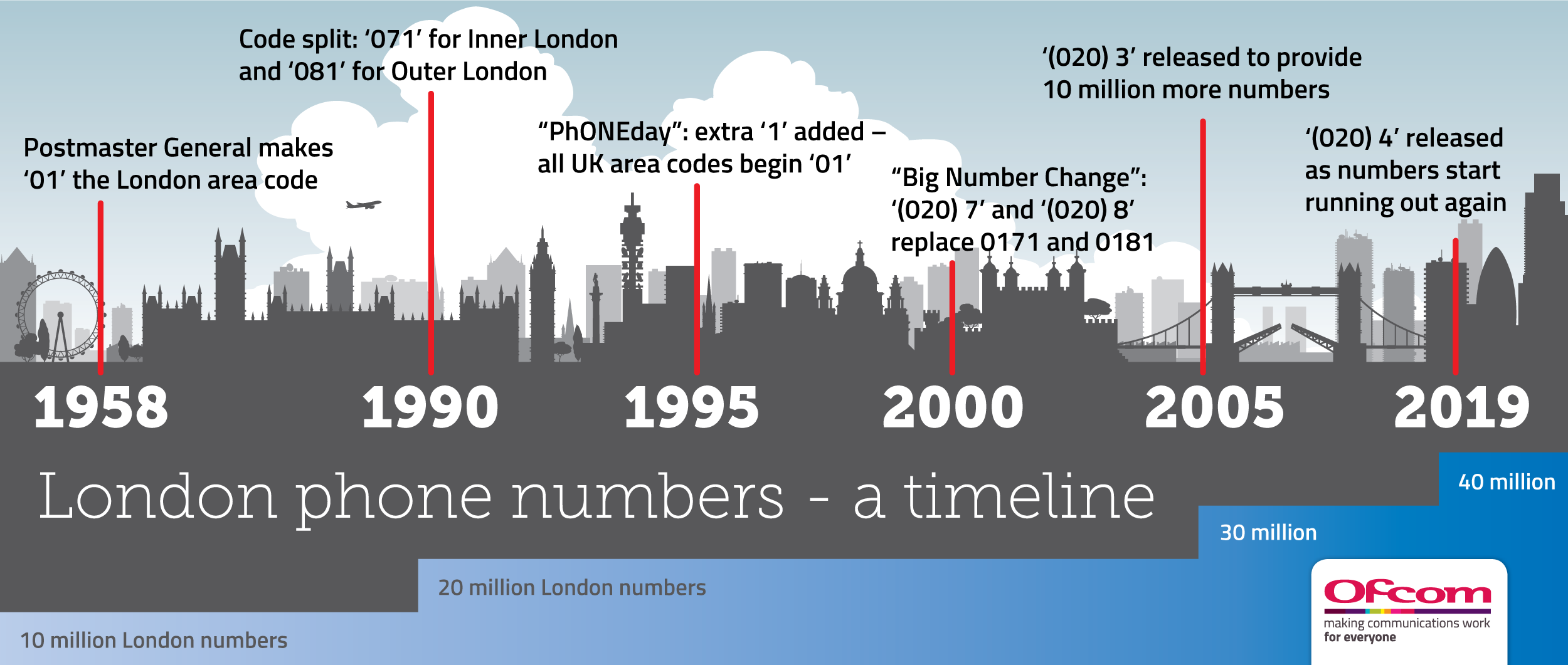As London continues to grow with new offices and homes, the demand for new landline phone numbers has grown rapidly. The city’s current dialling code is 020 and, across the (020) 3, 7 and 8 ranges, there are 30 million phone numbers.
Across all three ranges, there are fewer than a million numbers left to be handed out and London grows so quickly that, on average, Ofcom distributes 30’000 new numbers a week.
To help cope with the demand for new numbers, Ofcom have introduced a new range, ‘(020) 4’, which contains 10 million new numbers. Applications for the new numbers by telecoms companies began on the 1st of October and we can expect new ‘(020) 4’ numbers to be allocated in December.
London Numbers: History
The area codes for London have changed on quite a few occasions in the past, all to try and accommodate the growth in demand for landline numbers.
London was allocated the ‘01’ code in 1958. This area code would cover 10 million numbers and lasted until 1990, where the code was split. Inner London numbers became ‘071’ and outer London became ‘081’. As part of a change across the UK in 1995, all area codes gained a 1, so these numbers became ‘0171’ and ‘0181’. The day this occurred is commonly known as “PhONEday”.
However, the “Big Number Change” happened in 2000 and all UK phone numbers were reorganised to allow for more numbers to be created. This meant that London went back to a single area code of ‘020’ and the divide between inner and outer London was removed – instead being replaced with ‘(020) 7’ and ‘(020) 8’ numbers.
In 2005, Ofcom did some research in London regarding the split area codes and found that only a small minority of Londoners could correctly identify London’s single area code of '020' (13%).
In the same year, Ofcom released a new set of ‘(020) 3’ numbers to telecoms providers in blocks of 10’000 each. The amount of numbers available was 10 million and by 2019, these numbers have nearly all been allocated, resulting in the need for the new ‘(020) 4’ numbers.
Below is a graphic from Ofcom to illustrate London’s landline allocation timeline:

The history of landline number allocation in London (Picture: Ofcom)
With London still continuing to grow at even faster speeds, how long will it be before a new set of numbers is needed?






